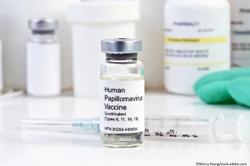© 2025 MJH Life Sciences™ , Patient Care Online – Primary Care News and Clinical Resources. All rights reserved.
Pneumatoceles
An irritable, lethargic, toxic-looking, and slightly cyanotic 2-month-old boy had a temperature of 40°C (104°F), malaise, and a cough for 2 days. The infant's heart rate was 98 beats per minute, and his respiratory rate was 55 breaths per minute. He had nasal flaring, sternal and subcostal retractions, diminished breath sounds, and scattered rales over the left lung, which was dull to percussion.
An irritable, lethargic, toxic-looking, and slightly cyanotic 2-month-old boy had a temperature of 40°C (104°F), malaise, and a cough for 2 days. The infant's heart rate was 98 beats per minute, and his respiratory rate was 55 breaths per minute. He had nasal flaring, sternal and subcostal retractions, diminished breath sounds, and scattered rales over the left lung, which was dull to percussion.
The white blood cell count was 16 × 109/L with 85% polymorphs. A chest film showed consolidation in the left lung, and a blood culture grew Staphylococcus aureus.
The infant was admitted to the hospital and given oxygen. Intravenous ceftriaxone therapy (75 mg bid) was initiated. After 5 days of treatment, the fever subsided, but the boy remained tachypneic. A second chest radiograph showed cystic areas in the left lower lobe (A). A thoracotomy was done, and multiple air-filled cysts were found in the left lower lobe (B).
Drs Alexander K. C. Leung and Andrew L. Wong of Calgary, Alberta, diagnosed pneumatoceles. Although pneumatoceles may be congenital, they are common in infants who have staphylococcal pneumonia. Pneumatoceles also may follow bacterial pneumonias caused by Streptococcus pneumoniae, Streptococcus pyogenes, Klebsiella pneumoniae, Hemophilus influenzae, and Mycobacterium tuberculosis.
Following excision of the pneumatoceles, this infant's postoperative course was uneventful. He was discharged in satisfactory condition 2 weeks after surgery.



